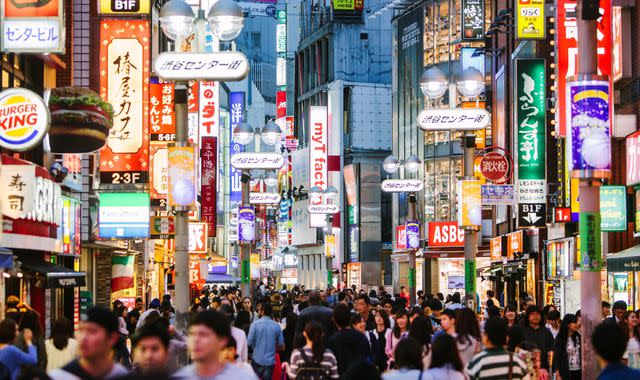Japan to ease COVID border restrictions for foreign travellers

Japan will ease its COVID-19 border control requirements and resume visa-free travel from next month.
In a bid to foster a recovery in the country's tourism sector, the rules will be changed as of the 11 October.
A cap on the number of daily arrivals, which is currently set at 50,000, and the requirement to adhere to planned package tours will also be scrapped.
Japan has enforced some of the strictest border measures in the world since the pandemic began, blocking entry to visitors for two years until it gradually started reopening in June.
Making the announcement, Prime Minister Fumio Kishida said: "We are a nation that has flourished through the free flow of people,goods and capital.
"COVID-19, of course, interrupted all of these benefits, but from October 11, Japan will relax border control measures to be on par with the US, as well as resume visa-free travel and individual travel."
It followed a pledge he made in May that the country would bring its border controls more in line with other G7 nations, such as the UK, France and Canada.
Prior to the pandemic, Japan had visa waiver agreements with nearly 70 countries and regions, including the US, the European Union and many Asian neighbours.
Under the new rules, people from certain countries who are vaccinated will be able to travel to Japan without a visa.
Purchases in Japan cheapest in decades
Mr Kishida may also revise regulations on hotels, allowing them to refuse guests who don't abide by infection controls, such as mask wearing, during an outbreak.
It is hoped the changes will have a significant impact on the economy, with business and travel companies previously warning the harsh rules could cause the nation to fall behind economically.
Read more on Japan:
Powerful typhoon batters Japan
Why Japan is encouraging young people to drink
On Thursday, Japan's currency weakened past the important level of 145 yen to the dollar, making foreign travel and purchases in the country the cheapest in decades.
In June, the country officially let in tourists for the first time in two years, but only about 8,000 arrived through July, compared with more than 80,000 visitors a day before the pandemic.

 Yahoo News
Yahoo News 
